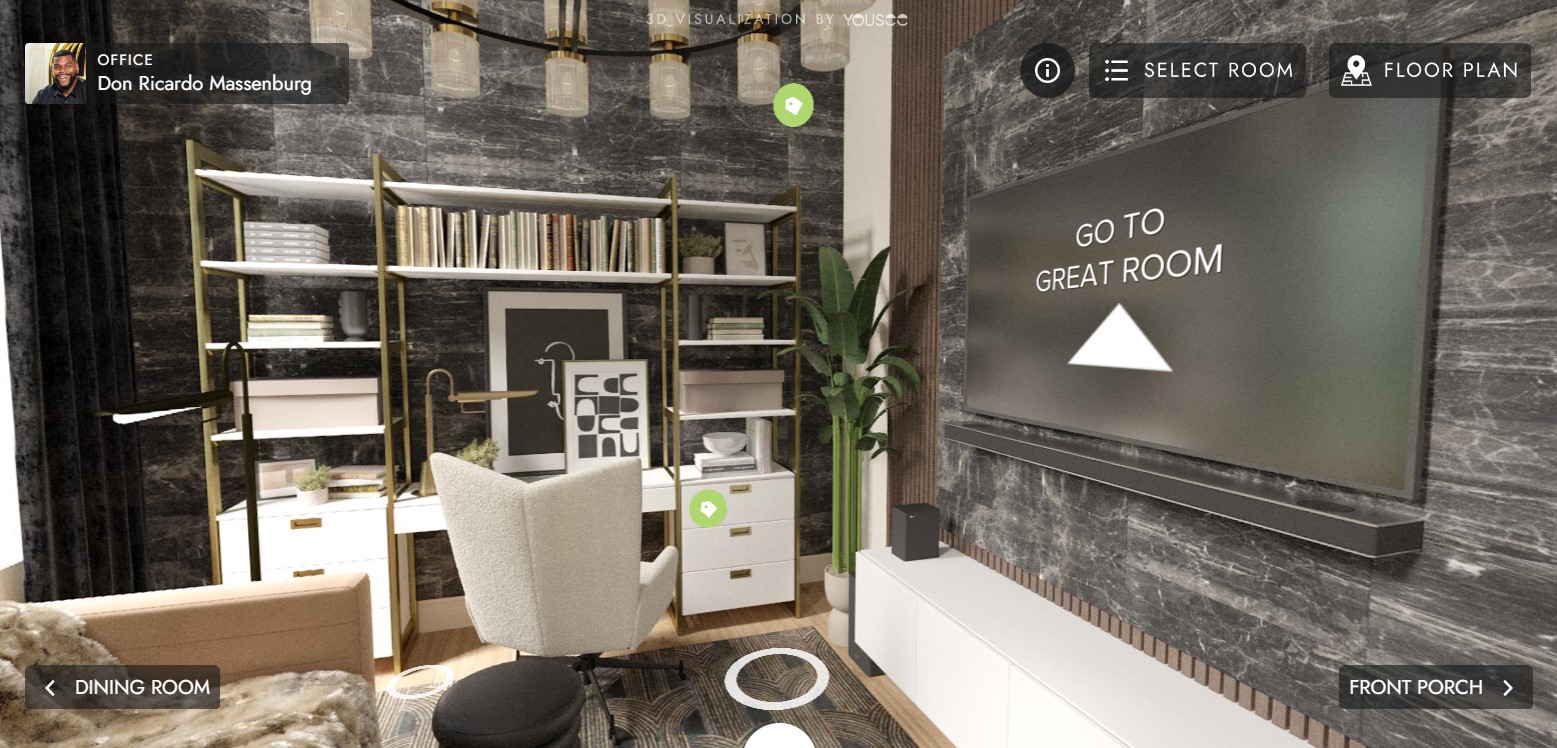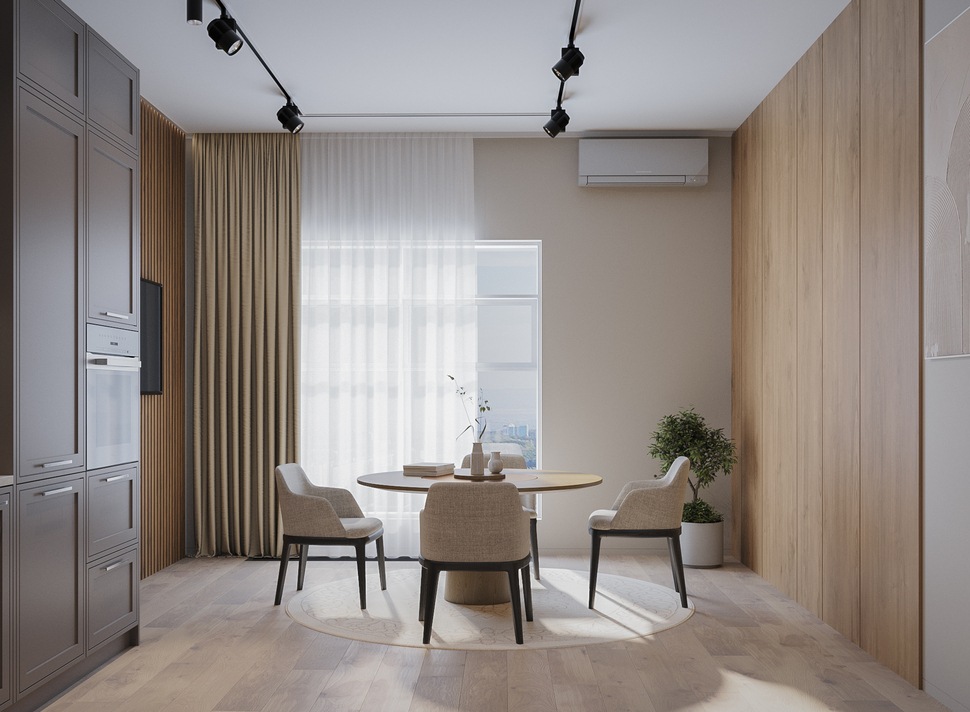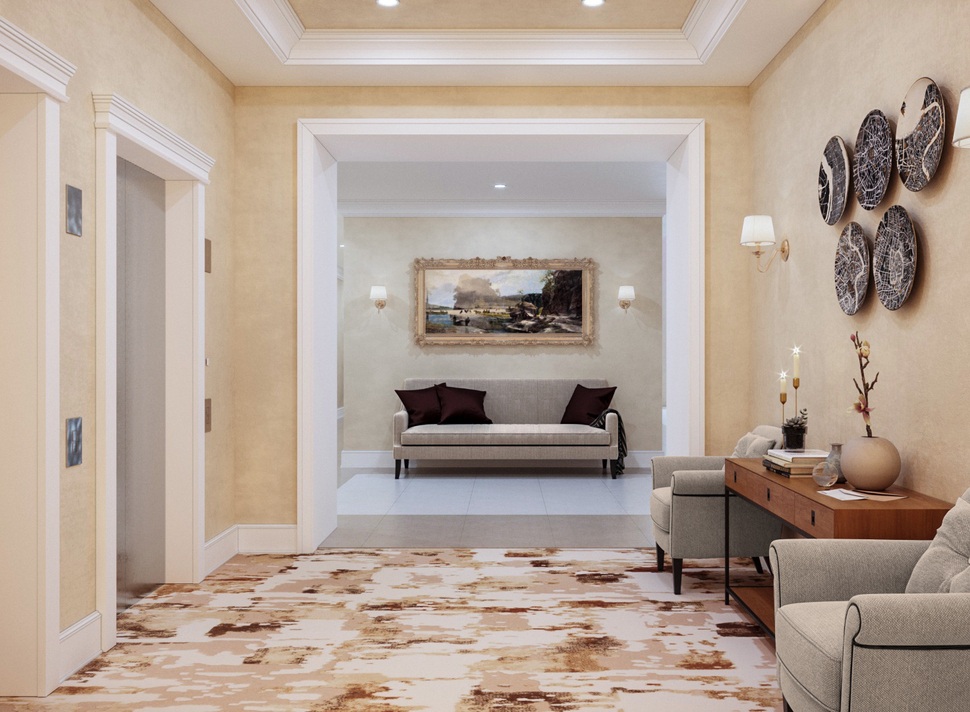The Craft of Digital Furniture Display: Elevating Experience with 3D Showrooms
In the evolving landscape of furniture retail, the virtual showroom 3D model has marked a revolutionary shift, offering an immersive shopping experience that transcends traditional boundaries. This article delves into the intricate craft of digital furniture display, exploring how 3D showrooms are reshaping consumer interactions and enhancing the visual merchandising of furniture. By integrating advanced 3D rendering techniques, retailers can now create lifelike virtual environments that showcase their products in unprecedented detail, providing customers with a comprehensive view of their offerings from the comfort of their homes.
Introduction to 3D Showrooms in the Furniture Industry
Integrating 3D showrooms in the furniture industry represents a significant technological leap, transforming how retailers showcase their products and engage with customers. Unlike conventional online catalogs or physical showrooms, 3D virtual showrooms offer a dynamic and interactive platform where customers can explore furniture collections in a realistic setting. This digital innovation not only enhances the shopping experience but also addresses the spatial and aesthetic considerations that are crucial in furniture selection.

Image from Yousee Studio
The significance of 3D showrooms extends beyond mere visual appeal; they serve as a vital tool in bridging the gap between online and in-store shopping experiences. By providing a virtual environment that closely mimics a physical showroom, customers can better understand how a piece of furniture would fit and look in their space. This immersive experience is powered by sophisticated 3D modeling and rendering technologies, which allow for the creation of detailed and accurate representations of furniture pieces, complete with textures, colors, and finishes that reflect the actual products.
Design Principles of Effective 3D Furniture Showrooms
Creating an effective 3D furniture showroom requires adherence to crucial design principles that ensure the virtual space is visually captivating but also user-friendly and engaging. One of the foundational elements in the design of 3D showrooms is realism. Achieving a high level of realism in the virtual environment is crucial for customers to assess the furniture's aesthetics and quality accurately. This involves meticulous attention to detail in the 3D modeling process, from the accurate depiction of materials and textures to the realistic representation of lighting and shadows, which contribute to the virtual showroom's overall authenticity.
Interactivity is another cornerstone of effective 3D showroom design. Allowing customers to interact with the virtual space and furniture enhances engagement and facilitates a deeper exploration of the products. Features like the ability to view furniture from different angles, zoom in on specific details, and customize product attributes like color and fabric options empower customers to make informed decisions. Additionally, navigational ease within the virtual showroom is paramount. The user interface should be intuitive, enabling customers to effortlessly navigate through different showroom sections, much like in a physical store. This ease of navigation improves the user experience and encourages customers to spend more time exploring the products on offer.
The craft of digital furniture display through 3D showrooms is revolutionizing the furniture retail industry, offering a blend of realism, interactivity, and navigational ease that elevates the customer experience. As we explore the technological innovations behind these virtual environments, it becomes evident that 3D showrooms are not just a trend but a fundamental shift in how furniture is presented and sold in the digital age. The ability to provide customers with an immersive and interactive shopping experience holds the promise of enhancing customer satisfaction and driving sales in the competitive furniture market.
Technological Innovations Behind 3D Furniture Showrooms
The backbone of any effective 3D furniture showroom is the array of technological innovations that enable creating and operating these immersive environments. At the forefront are advanced 3D modeling and rendering software such as Autodesk 3ds Max, Blender, and SketchUp, which allow designers to construct highly detailed and accurate digital replicas of furniture pieces. These tools offer sophisticated features for texturing, lighting, and animating models, ensuring that the virtual products are as close to their natural counterparts as possible regarding appearance and texture.
Moreover, integrating Virtual Reality (VR) and Augmented Reality (AR) technologies has significantly elevated the virtual showroom experience. VR allows customers to immerse themselves in a wholly digital environment, exploring 3D showrooms in a way that closely mimics a physical store visit. For instance, with a VR headset, customers can virtually walk through a showroom, interact with furniture, and visualize how these pieces would fit in their spaces. AR, conversely, brings the convenience of projecting virtual furniture into the customer's actual living space through their smartphone or tablet, providing a seamless blend of the virtual and real worlds. This ability to 'try before you buy' in the comfort of one's home is revolutionizing the furniture shopping experience.
Real-time rendering technologies are another pivotal innovation in the realm of 3D showrooms. Platforms like Unreal Engine and Unity have made real-time interactions possible within the 3D environment, allowing customers to customize furniture in color, material, and size with immediate visual feedback. This level of interactivity enhances user engagement and aids in more informed decision-making.
Benefits of 3D Showrooms for Retailers and Customers
The advent of 3D showrooms brings a plethora of benefits to both retailers and customers, fundamentally altering the landscape of furniture retail. For retailers, one of the most significant advantages is the competitive edge that 3D showrooms provide. In a market where differentiation is critical, offering an innovative and immersive shopping experience can set a brand apart, attracting more customers and potentially increasing market share.
Furthermore, 3D showrooms offer cost efficiency by reducing the need for extensive physical spaces and the associated overheads. Retailers can showcase an extensive inventory of products in a virtual space without the limitations of physical showroom size. This allows a more comprehensive product range to be displayed and allows retailers to easily update and change the showroom setup without the logistical challenges and costs of rearranging a physical store.
From a customer's perspective, 3D showrooms enhance the shopping experience by providing greater convenience and flexibility. Customers can explore a vast array of furniture options from anywhere, at any time, without the need to visit multiple physical stores. This accessibility is particularly beneficial in today's fast-paced world, where time is precious.

Image from Yousee Studio
Moreover, 3D showrooms significantly improve decision-making by giving customers a realistic view of how furniture pieces would look in their intended setting. The ability to interact with the furniture, customize options, and see the products in a lifelike environment helps customers make more informed choices, reducing the likelihood of returns and increasing satisfaction.
The craft of digital furniture display through 3D showrooms is not just about adopting new technologies; it's about reimagining the furniture shopping experience in a way that benefits both retailers and customers. The technological innovations behind these virtual spaces are continually evolving, offering ever-more realistic and engaging experiences. For retailers, the transition to 3D showrooms represents an opportunity to innovate and stand out in a crowded market. It offers customers a new level of convenience, engagement, and confidence in purchasing decisions. As this digital revolution unfolds, it's clear that 3D showrooms are set to become an integral part of the furniture retail landscape, reshaping expectations and experiences in an increasingly digital world.
Implementing 3D Showrooms: Strategies and Considerations
The journey toward integrating 3D showrooms into a furniture retail strategy involves several critical steps, each demanding careful consideration to ensure a seamless transition and effective deployment. The first step is planning and conceptualization, where retailers must define their objectives for the 3D showroom. This includes identifying the target audience, understanding their preferences, and determining how the 3D showroom can meet their needs while aligning with the brand's identity.
Following the initial planning phase, the focus shifts to design and development. This stage involves creating the 3D models of the furniture and designing the virtual showroom layout. Attention to detail is paramount here, as the realism and interactivity of the showroom significantly impact the customer experience. Retailers must collaborate closely with 3D artists and developers, leveraging their expertise to ensure that the virtual space is visually appealing but also intuitive and user-friendly.
Technology selection plays a crucial role in this process. Retailers must choose the right platforms and software to support their 3D showroom needs, considering compatibility, scalability, and ease of use. This decision will influence the showroom's functionality, from the level of detail in the 3D models to the interactivity and customization options available to customers.
Testing and optimization are essential before the official launch of the 3D showroom. Retailers should conduct thorough testing to identify and resolve technical issues, ensuring a smooth and enjoyable user experience. Feedback from test users can provide valuable insights into potential improvements, helping to refine the showroom before it reaches the wider public.
Once the 3D showroom is live, ongoing maintenance and updates are crucial to keep the space fresh and engaging. This includes:
- Regularly updating the product range.
- Incorporating new features.
- Adapting the showroom based on customer feedback and evolving market trends.
Retailers must stay attuned to technological advancements and customer expectations, continually enhancing the showroom to maintain its appeal and effectiveness.

Image from Yousee Studio
In conclusion, the craft of digital furniture display through 3D showrooms represents a significant leap forward for the furniture retail industry. By combining cutting-edge technology with creative storytelling and design, retailers can create immersive virtual spaces that elevate the customer experience and offer a new dimension to furniture shopping. However, successfully implementing 3D showrooms requires careful planning, collaboration with skilled professionals, and an ongoing commitment to innovation and customer satisfaction. As the digital landscape continues to evolve, 3D showrooms stand at the forefront of retail innovation, offering a glimpse into the future of how we select, visualize, and purchase furniture in an increasingly virtual world.
Contact us at YouSee Studio for captivating 3D renderings and immersive virtual experiences.
Ray Lisbon is a content writer and the author of this article.




